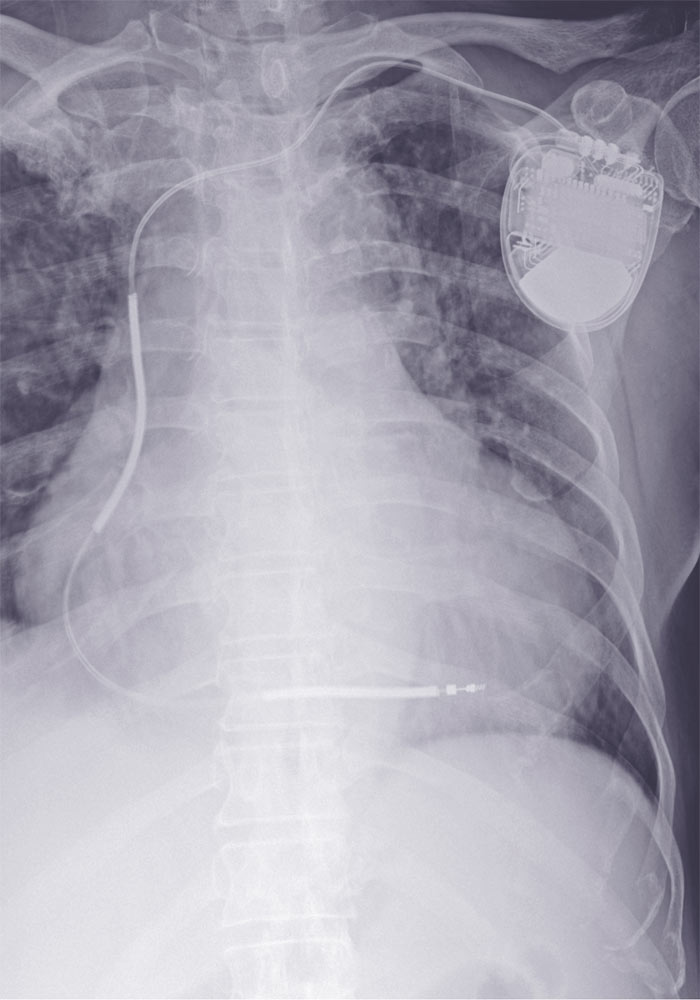CARDIAC DEFIBRILLATOR

CARDIAC DEFIBRILLATOR
Defibrillators are devices that are implanted to prevent sudden cardiac death in patients who have been diagnosed to be at high risk for this purpose.
Implantation process is identical to this of pacemaker implantation. All defibrillators have to potential to function as pacemaker devices. The main difference from the corresponding pacemaker devices is the electrode implanted in the right ventricle, which has the capability to defibrillate. Otherwise, the type of pacing is selected by the attending cardiologist based on the needs of each patient. In case the patient does not need pacing then this function is not activated.
Defibrillator devices are larger than conventional pacemakers due to the need for a larger generator (“battery”). Modern defibrillators are equiped with “intelligent” software for heart rhythm and potentially fatal arrhythmia recognition.
Upon recognition of ventricular tachycardia, the device attempts to stop it by pacing the right ventricle at an even faster rate (anti-tachycardia pacing) and if this fails, defibrillation is administered (electric shock). Upon recognition of ventricular fibrillation, defibrillation is immediately administered. Unfortunately, despite significant advances in software, there are instances where a defibrillator may deliver an electric shock without any real arrhythmia-related threat for the patient (inappropriate discharge); usually a misdiagnosed non-fatal arrhythmia is the cause. In this scenario, the cardiologist has to optimize the treatment settings of the device based on individual patient’s characteristics.
Implantation of a defibrillator is associated with small risks both in terms of the implantation per se (eg swelling / infection / hematoma in the area of the device “pocket”, pneumothorax, hemothorax, hemopericardium) as well as long-term (eg infection of the “pocket”) or the defibrillation system. For this reason, indications for implantation of defibrillators are specific and strict so that potential benefits outweigh potential risks. In uncomplicated cases, the patient stays overnight in the hospital and returns to his daily routine the day after (for a few weeks, however, special care is required to minimize the movement of the upper limb on the side in which the device has been implanted).
